There are many health conditions that may affect the type, intensity, or duration of a physical exercise, e.g., high blood pressure, heart rate, joint injuries, etc. An individual may not even be aware of these conditions without consulting a medical practitioner. A person may be excluded from active participation in strenuous physical activity on the basis of the outcome of the medical clearance. The major purpose of getting a medical clearance is to identify specific health needs that may require follow-up or monitoring. This medical clearance may be given in the form of a letter, certificate or form.
A medical clearance form is a document that aims to aggregate all the information related to the health condition of a patient. This helps the relevant people to know whether the patient is mentally and physically fit. In surgery, a medical clearance form can help determine if a proposed course of treatment will adversely affect the patient’s condition or if the patient’s delicate condition could worsen if the proposed course of treatment is opted for.
A patient with an underlying medical condition will be easily identified, and a different medical approach that suits his condition will be taken.It may also be referred to as the mental health information form as it is used to assess an individual’s ability to successfully participate in mentally draining activities.
Free Forms
Medical clearance form
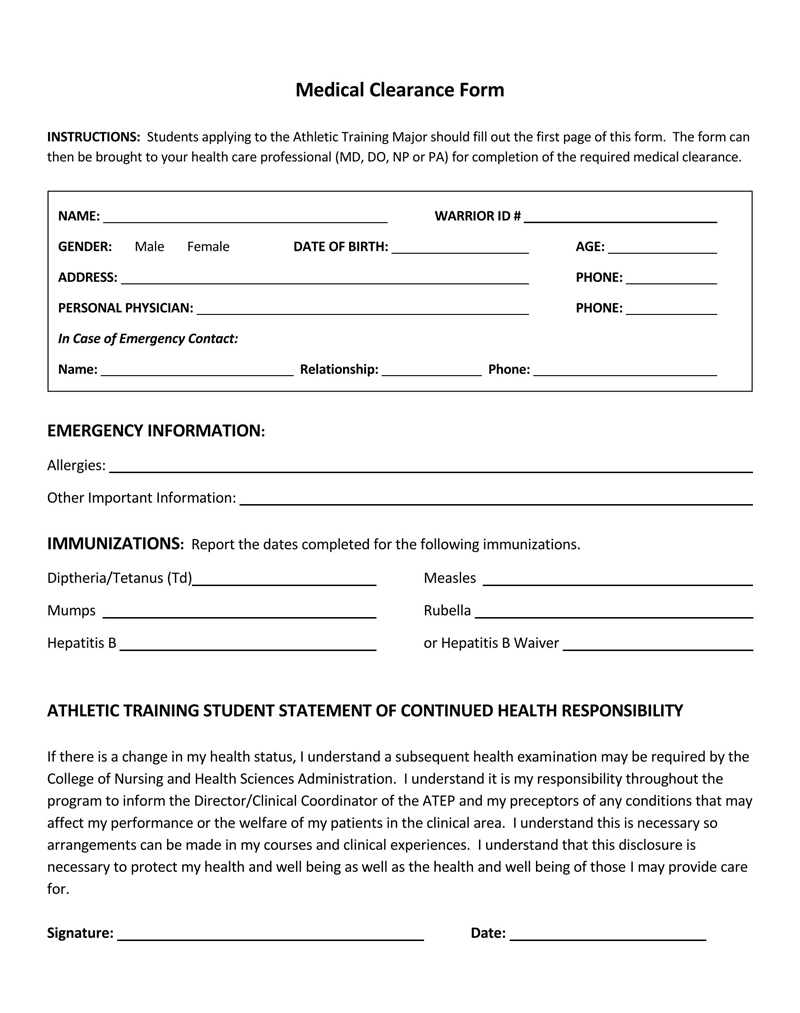
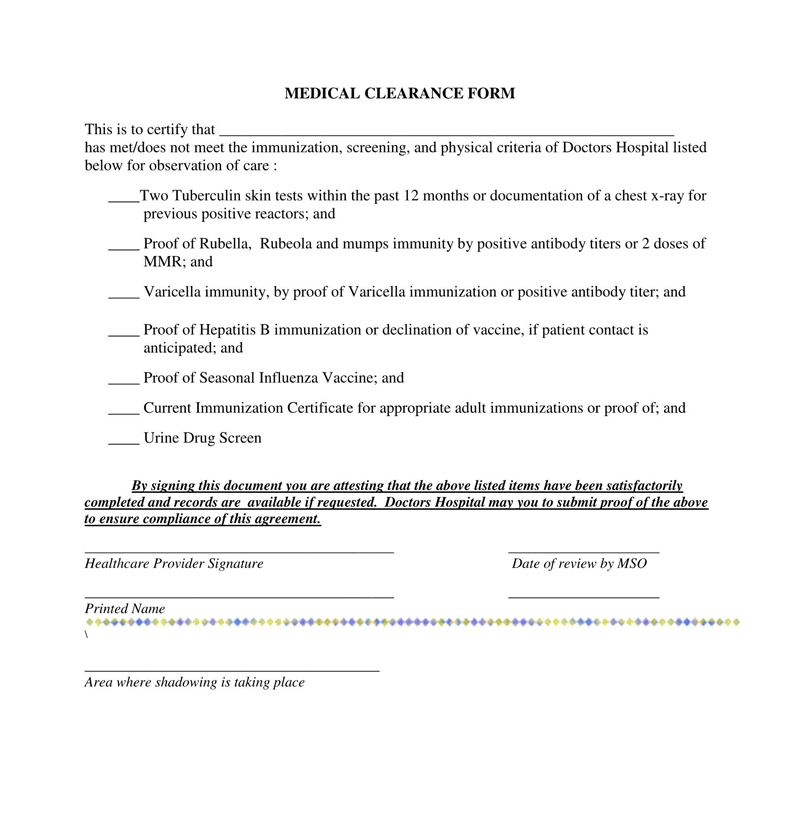
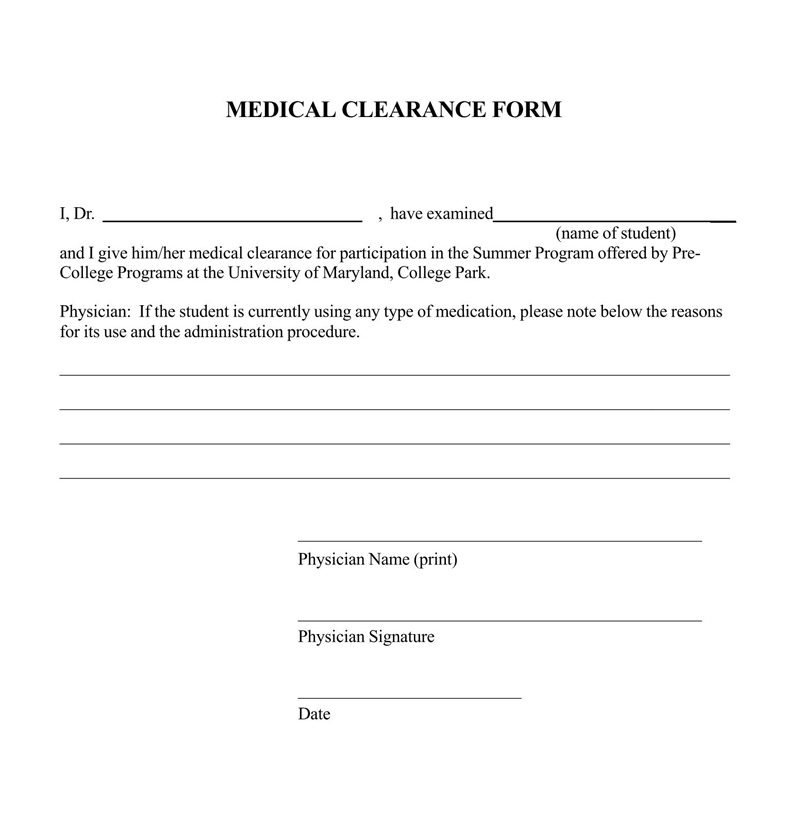
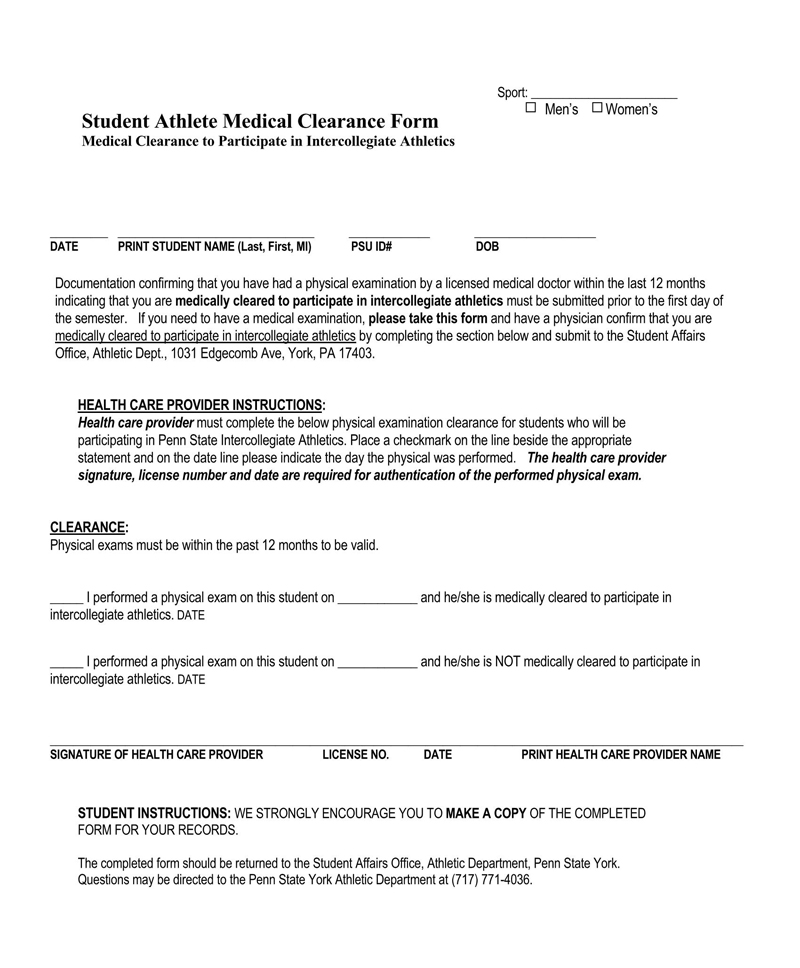
Medical clearance sample
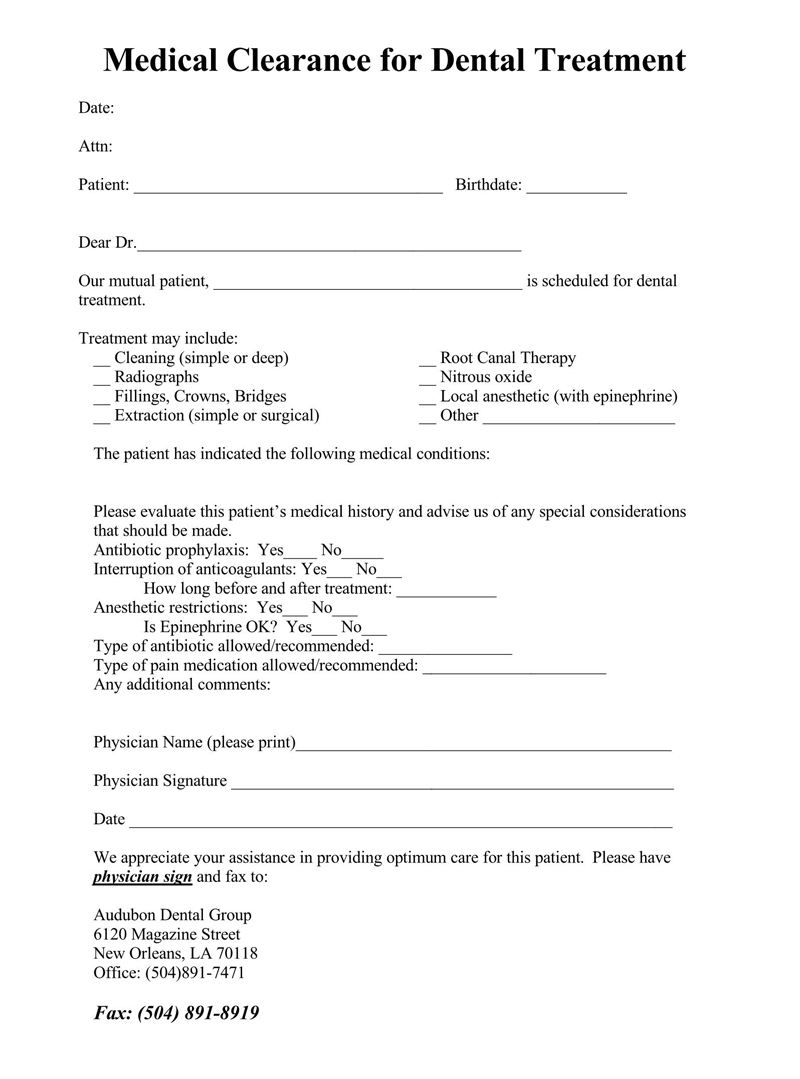
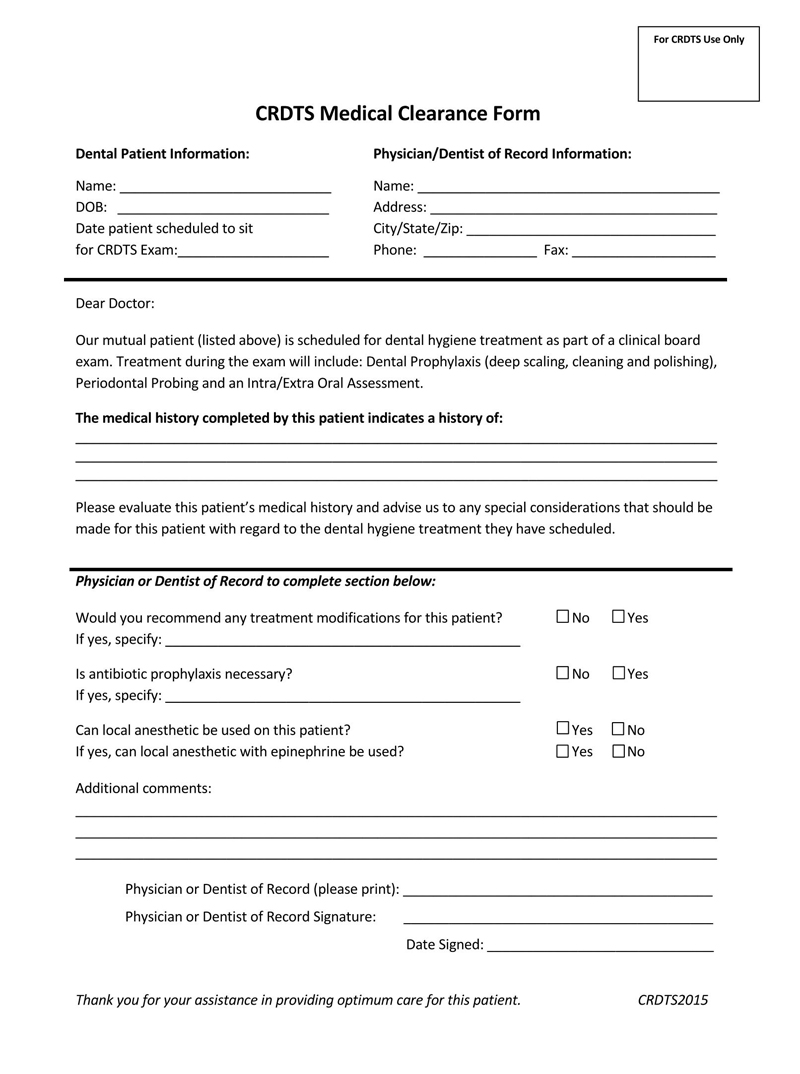
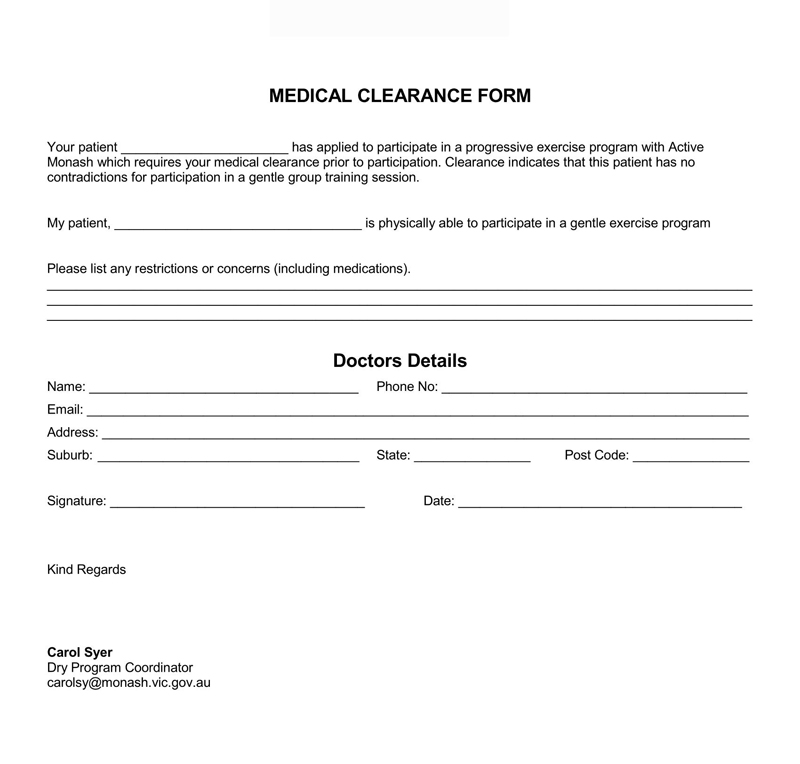

Medical clearance form for exercise
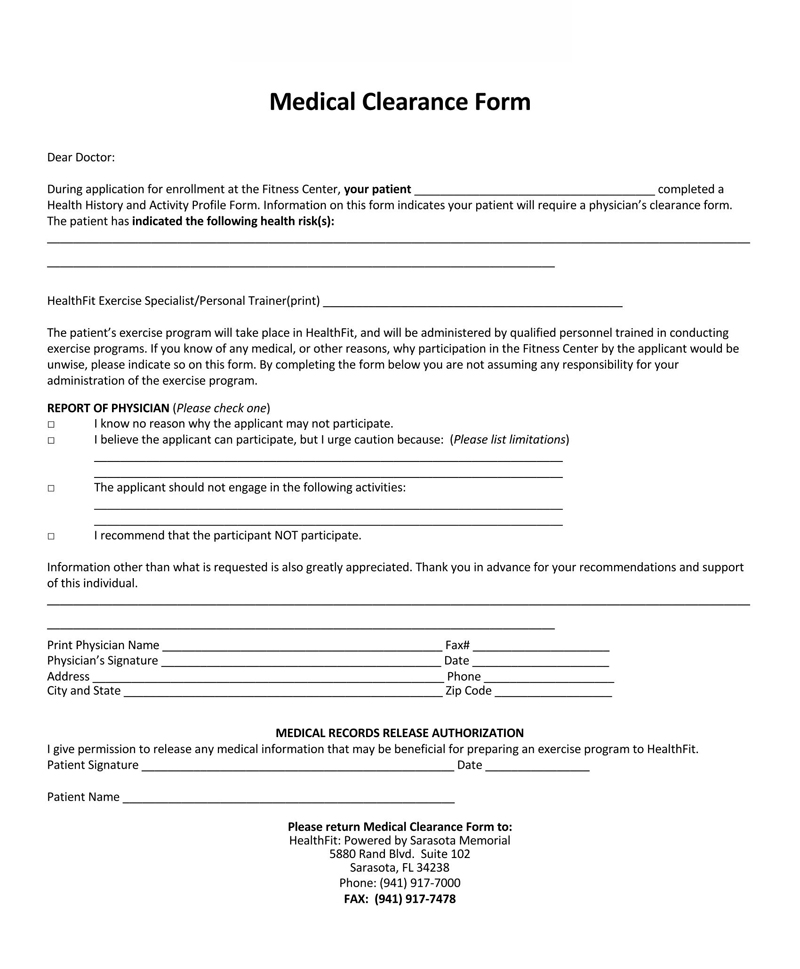
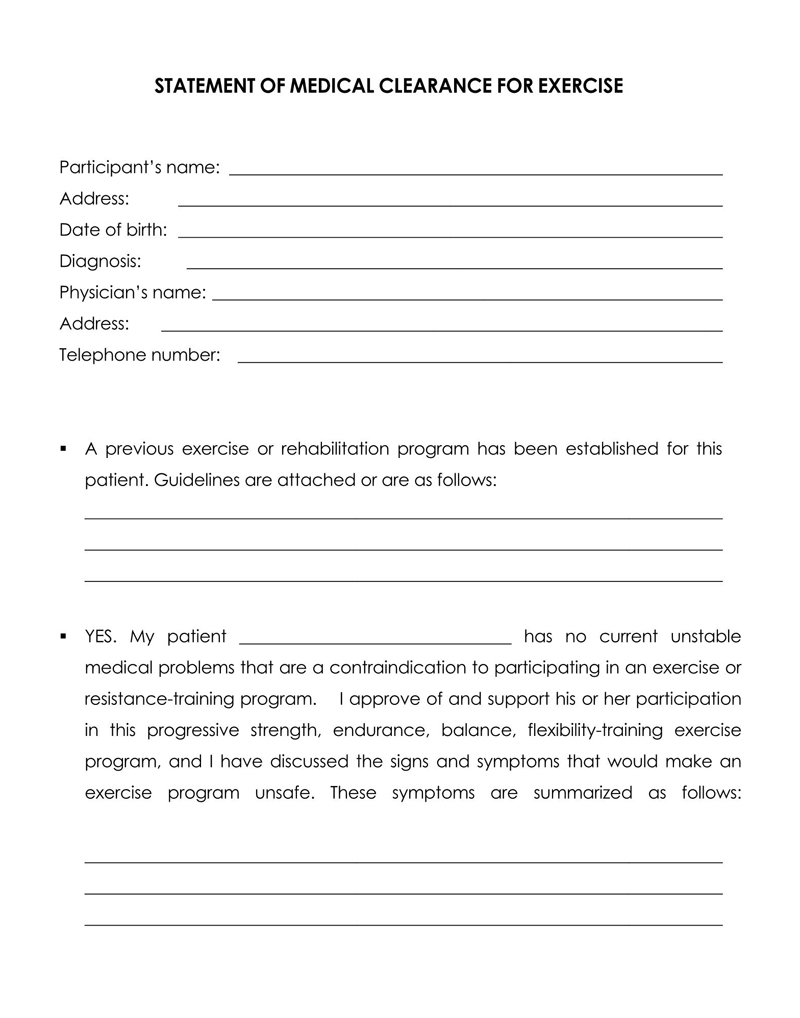
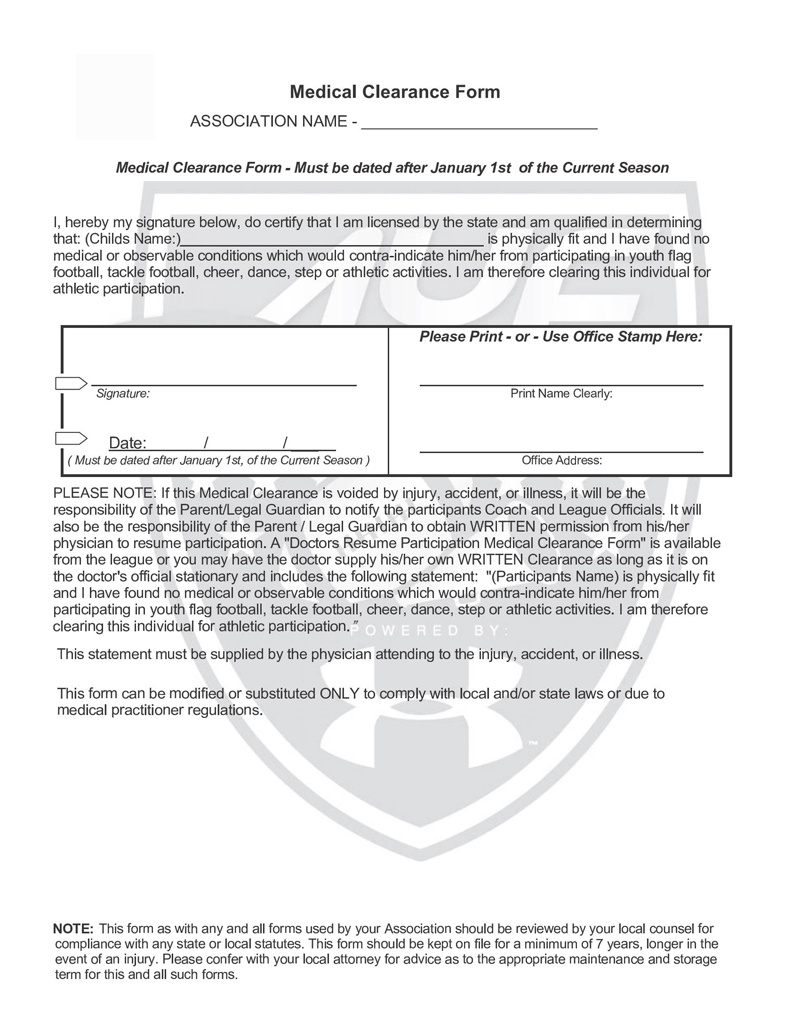
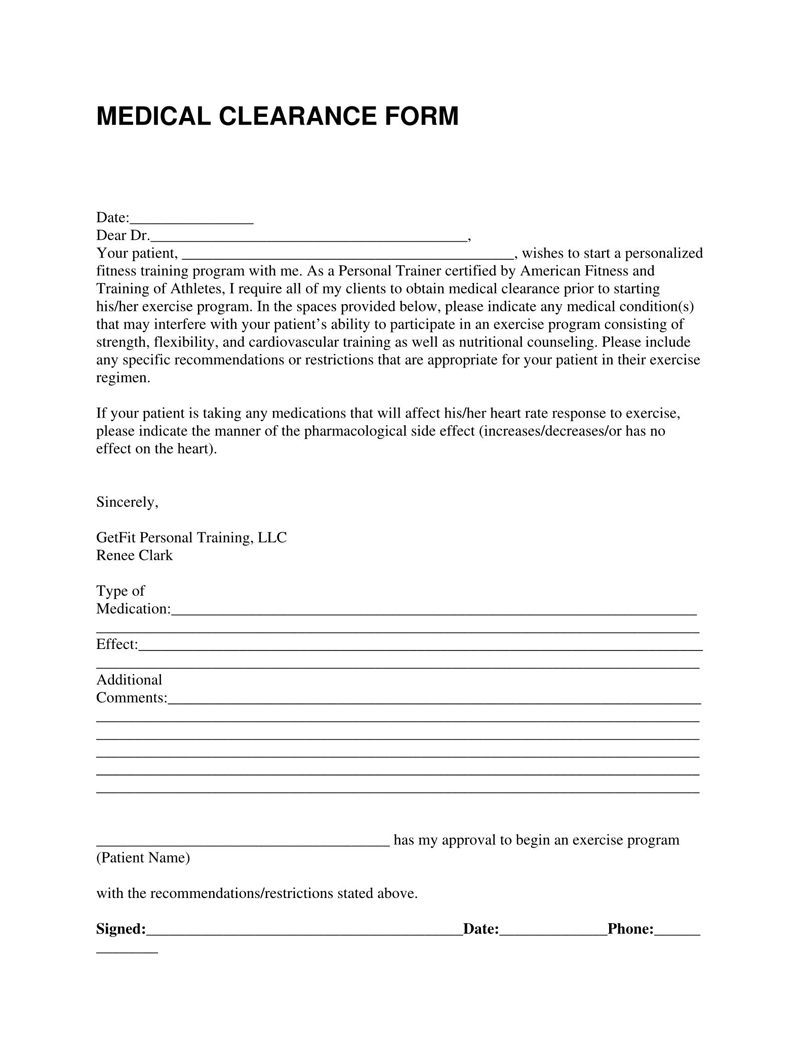
Medical clearance form for work
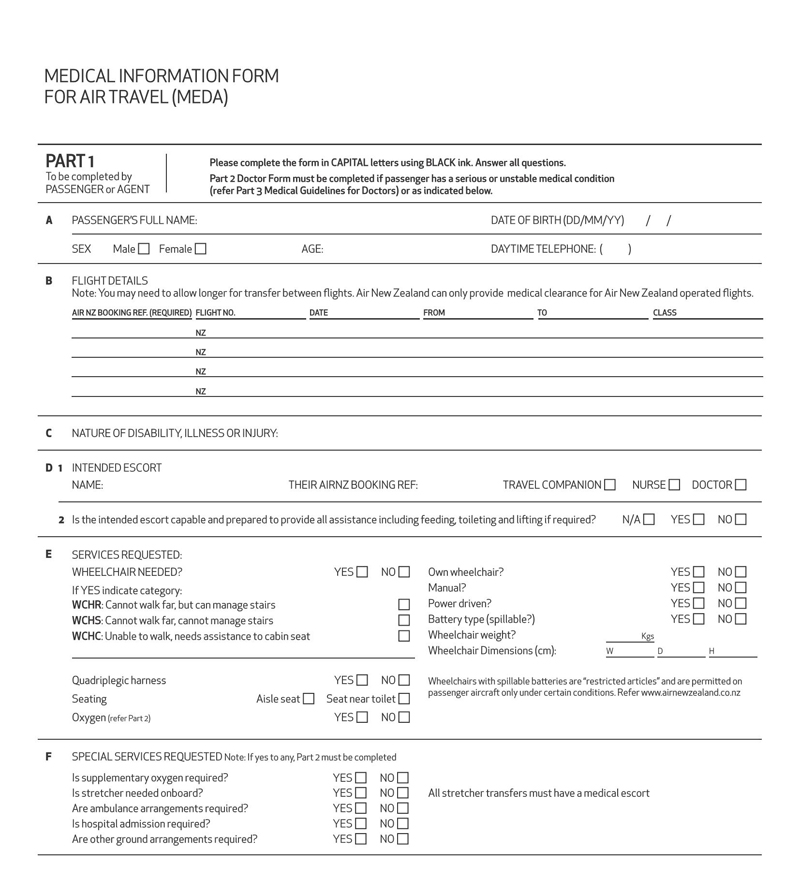
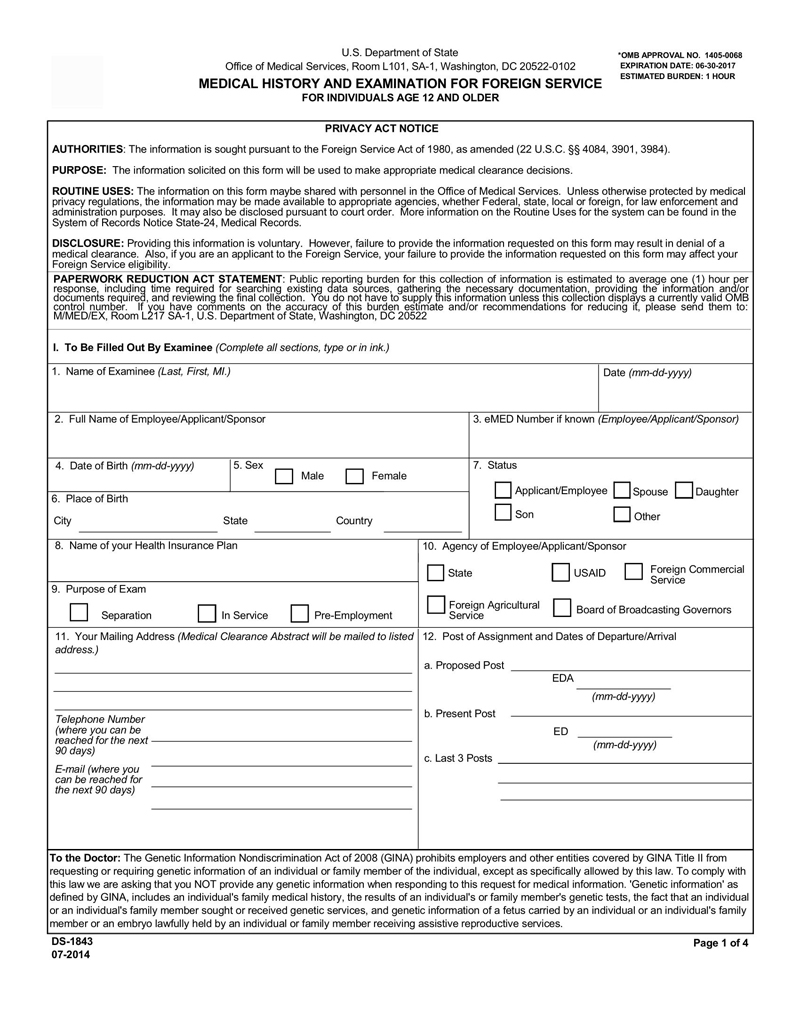
Medical clearance form for air travel


General medical clearance form
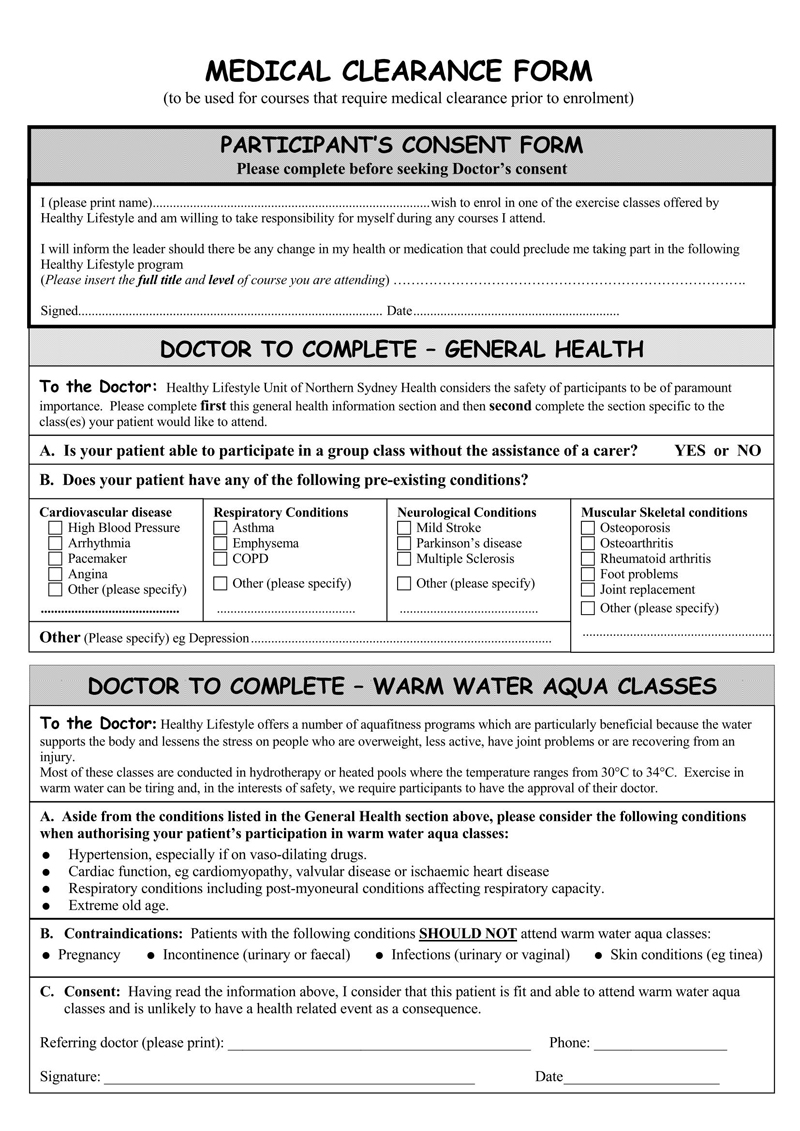
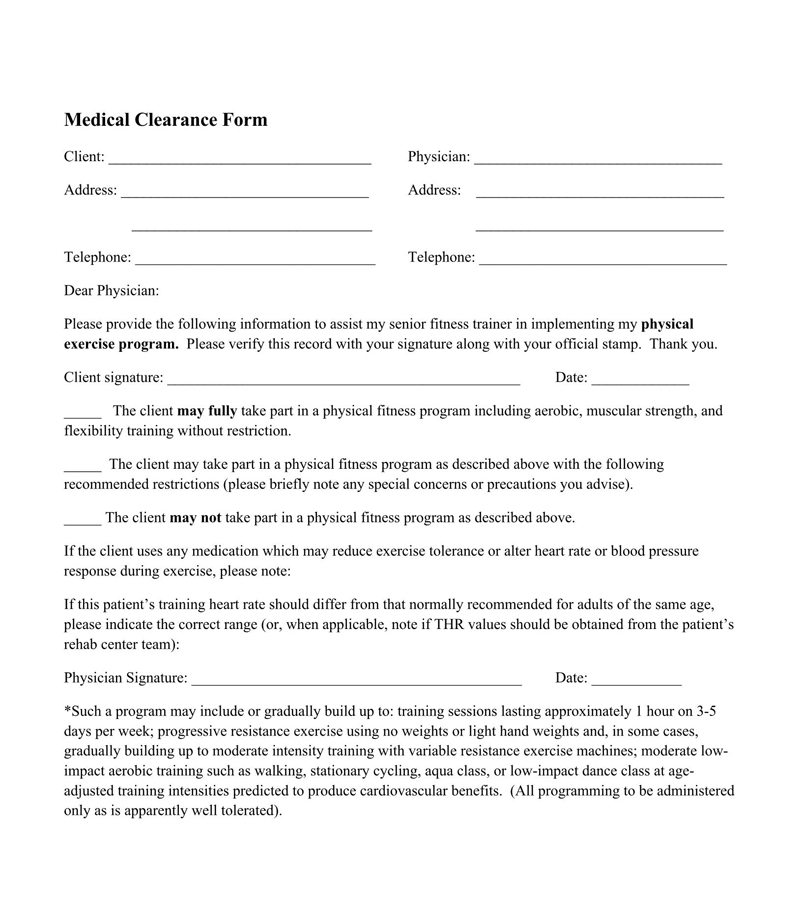
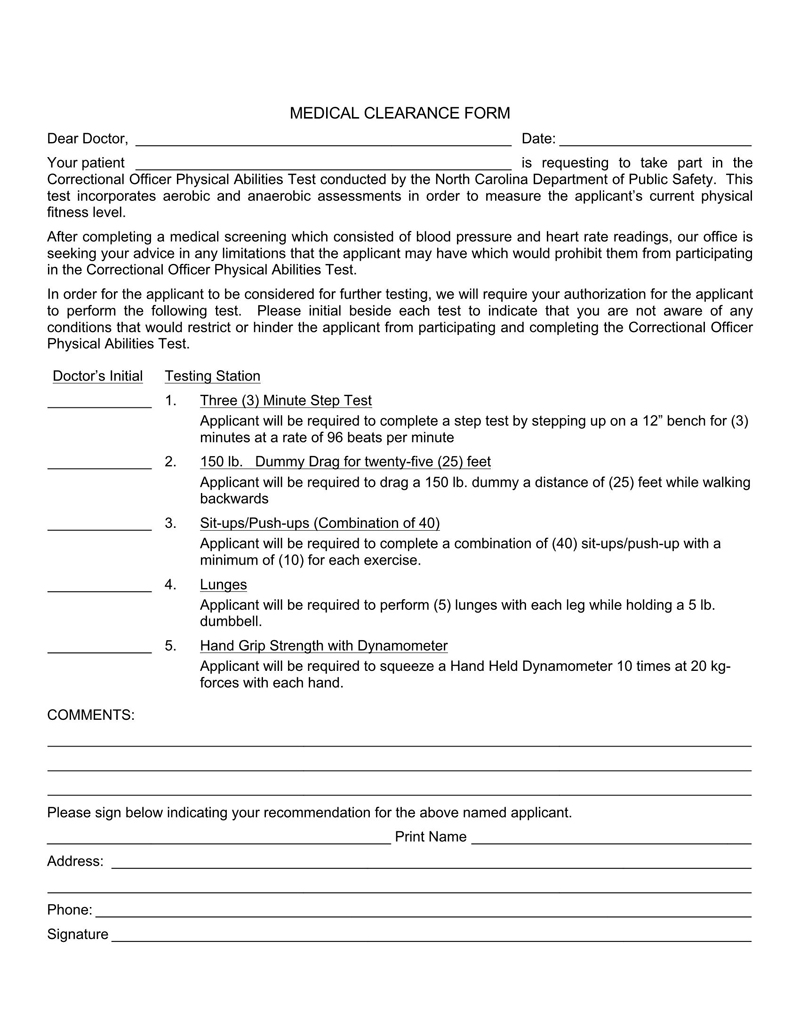

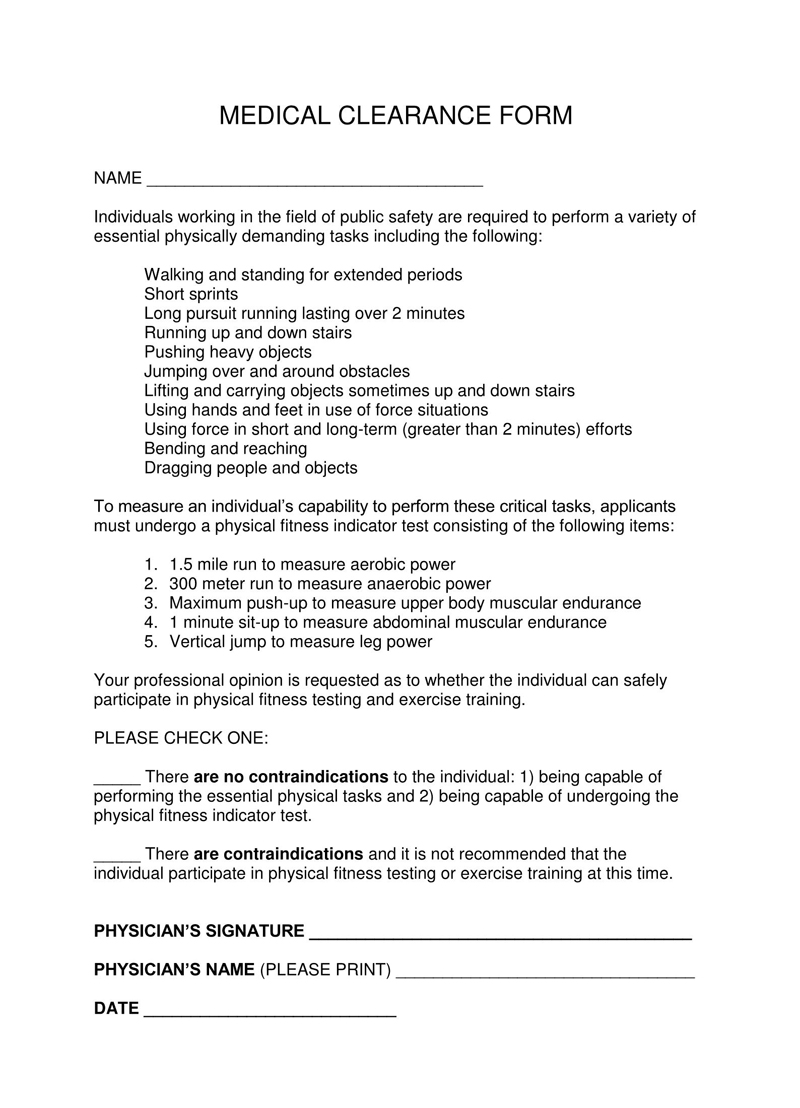
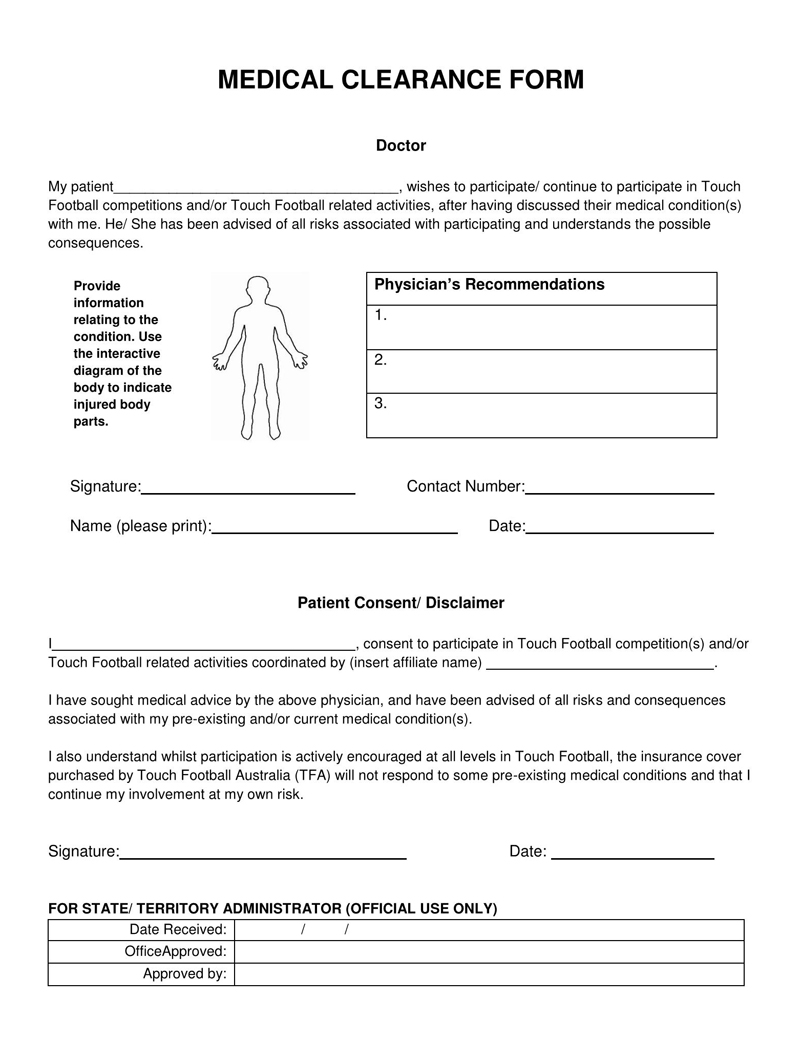
Classes of Medical Clearance Form
There are basically two classes a of medical clearance form: The worldwide available and the post-specific, which are described below:
Worldwide available (class 1)
This medical clearance form is issued to an individual upon completion of a medical assessment. It certifies that no health condition was observed upon due evaluation, which could identify a threat to the patient. This, therefore, will act as a guarantee to the people concerned to either employ the individual or proceed with a surgery or medical procedure as the case may be.
Post-specific (class 2)
On the contrary, this is issued to an individual with an underlying medical condition that poses a great risk to his involvement in certain physical activities. Such a health condition may endanger the individual or others around him if employed to perform certain tasks. Therefore, this helps the fitness trainer or an employer to take a different approach in assigning roles or different exercise routines for the individual.
Essential Components of a Medical Clearance Form
A medical clearance form must include all the relevant information related to the patient including his personal information such as name, address, age, next of kin, telephone and data, as well as the physician’s data, patient’s health status and remarks.
After filling out these fields, the physician will be requested to fill out subsequent fields detailing medications that need to be taken by the patient (if any). The physician’s details are also provided subsequently along with his remarks. Whether he certifies the patient to be fit for a purpose, either fully or partially and whether he doesn’t certify him fit after carrying out all the necessary medical examinations.
Patient’s details
It is necessary to include all the necessary information of the patient, such as the name, date of birth, gender, age, name of next of kin, medical history, and contact address and contact number of both the patient and the next of kin. In addition, the reason for medical screening and patients’ signatures should also be included.
Details of the doctor giving the clearance
This helps, among others, to determine the veracity of such clearance and to know if it is forged or not. It is advised that only a qualified health practitioner conduct the medical clearance and fill the form. The details include the doctor’s name, phone, contact address, details of the hospital they are working in, and their signature. The signature is often affixed as a stamp or seal of validation that the patient has been certified fit.
Date
This refers to the date when the screening was conducted, and it must be included to know how recently the evaluation took place and if it is possible that facts could have changed between then and now. The medical assessment is usually conducted months before undergoing the surgical procedure so as to start any form of medications that are needed.
Medical conditions to be screened for
All medical conditions must be included and filled in a medical clearance form. However, some health conditions are aggravated with physical activity, especially when such an activity is a rigorous one.
These medical conditions could be classified generally into:
Potentially life-threatening
These refer to any chronic illness, medical condition, or allergies that, if left untreated in certain conditions or poorly treated, could lead to death. Examples of these include severe allergies, epilepsy or seizures, and severe asthma.
Serious illnesses
This refers to deadly diseases such as coronary artery disease, stroke, lower respiratory infections, among others.
Significant health conditions
A significant medical condition refers to any serious injury or impairment, physical or mental condition which requires hospitalization. The following are examples of significant health conditions: Alzheimer’s disease, cancer, treatment for substance abuse, nervous disorders, severe depression, severe arthritis, and others.
Other health conditions that may be screened for include the following:
- High blood pressure
- Obesity
- Hepatitis B
- Osteoporosis
- Diabetes mellitus
- Cardiovascular risk (required before conducting a spine surgery)
- Pulmonary embolism
- Heart failure
- Asthma
- Organ illness such as kidney failure
- Skin disorders
- Hearing or sight difficulties
- Skin conditions such as eczema or knee ligament tears (this helps in physical exercises)
After the evaluation of these past health conditions, it is important to also assess the current status of such condition with an aim knowing if there has been substantial recovery or not.
Exacerbating Factors
These are conditions that may aggravate or worsen the identified health conditions of a patient. The inclusion of this in the medical clearance form will help the recipient to know areas in which he should limit the individual’s participation in physical activity.
Below are some of the most common forms of medical conditions and their exacerbating factors:
- High Blood pressure: Stress, lack of physical activity, extreme alcohol consumption, insufficient intake of potassium, calcium, and magnesium, smoking, etc.
- Asthma: Physical exercise, some form of medications, breathing in cold & dry air, dust, fatigue
- Diabetes: Inactivity, genetics, poor diet
- Knee injury: Overuse, improper training, playing high-impact sports, and exercise that involves a sudden change in direction
Additional Assessment and Tests
When a hospital requires a medical clearance form to be filled by the patient before carrying out the surgery, the aim is usually to understand what risks such an individual may be at. This medical clearance helps to manage such risks with the aim of avoiding further injury or harm to the person concerned.
A comprehensive medical examination process involves the monitoring or examination of blood pressure, vision, heart condition, abdomen, chest x-ray, urine (checked for sugar and blood test) and electrocardiogram (EKG).
For jobs that demand physical fitness, prospective and existing employees may be required to undertake a work fitness assessment (this is otherwise known as a functional capacity assessment or musculoskeletal assessment) which involves checking the gait of the patient, inspecting the spine, observing the range of motion of joints, inspecting muscles and extremities for size and symmetry, and assessing muscle strengths.
Other assessments may involve alcohol breath test, audiometry (hearing test), spirometry (lung test), MRI, ECG, manual handling assessment, and fitness test. Other assessments may be necessary depending on an individual’s certain health needs
Remarks After Physical Examination
This section is to be completed by the physician, and it entails his remarks after completing the physical assessment exercise.
Remarks could take either of these three forms:
- The physician could approve the patient’s participation in the job, surgery, or exercise without the restriction of any form
- He could approve patient’s participation in physical activities but subject to certain restrictions such as supervised membership, physical therapy, fitness assessment, and others
- A physician may not approve of a patient’s participation in exercises or physically strenuous activities depending on the outcome of the test. If this is done, such a patient will not be allowed to participate in such physical activity
The physician may also refer the patient to undergo certain evaluations such as physical therapy, pulmonary rehab, cardiac rehab, etc. The remarks provided by the qualified health practitioner may also help the surgeon to use a different surgical procedure to suit the patient’s needs.
Details of the activity requiring medical clearance
This section of the medical clearance form details the activity that requires the medical clearance. When medical clearance is required before performing a spine surgery, for instance, the health practitioner will indicate on the form certain details of the spinal procedure such as the type of the procedure, the aim or purpose of the procedure, type of anesthesia required, duration of the procedure and recovery details
Additional comments
This segment of the clearance form is where the health practitioner indicates other additional comments on the medical assessment conducted. This may include professional health tips for the patient or other advice on health issues not totally related to the activity requiring the medical clearance, but which are detected during the screening process. It could also contain more detailed information that will benefit the recipient of the medical clearance form, such as a surgeon, an employer, or a fitness trainer.
Signature of the doctor giving clearance
The doctor, upon conclusion of the assessment and filling of the clearance form, will append his signature on the clearance form, which acts as the doctor’s seal of approval as a medical authority and validates the clearance process as thoroughly conducted.
Details of the person requesting clearance
This section provides the details of the recipient of the medical clearance form and is only applicable to the class 1 form. This class of forms gives an individual clearance and certifies him fit for a job or participation in any physical exercise.
Frequently Asked Questions (FAQs)
Generally, medical clearances are carried out by an individual before a major surgery, or by an applicant before employment. It is also carried out before engaging in physically draining exercises.It is often carried out as early as possible upon request in order to give room for adequate corrections where necessary.
This medical clearance is given in the form of a letter, certificate or form. If the doctor detects any health condition which requires urgent attention, he may advise the patient to go for treatment while the medical clearance remains pending till the medical condition is treated. Such illnesses are only picked during a routine examination.
A Physician or a medical specialist carry out medical clearance and
also fill the form himself. The clearance process involves self-filled questionnaire that asks the person for reporting any medical condition of significance.
Getting a signed medical clearance form does not guarantee that the surgery will be a hundred percent risk-free as no surgery is risk-free. The clearance is just an assurance that the risks are less likely to occur for the patient. Also, it helps to figure out underlying health conditions which may act as obstacles during the surgery.There could still be complications or unforeseen risks in the process of the surgery. However, medical clearance is still very essential before undergoing a surgical operation.











